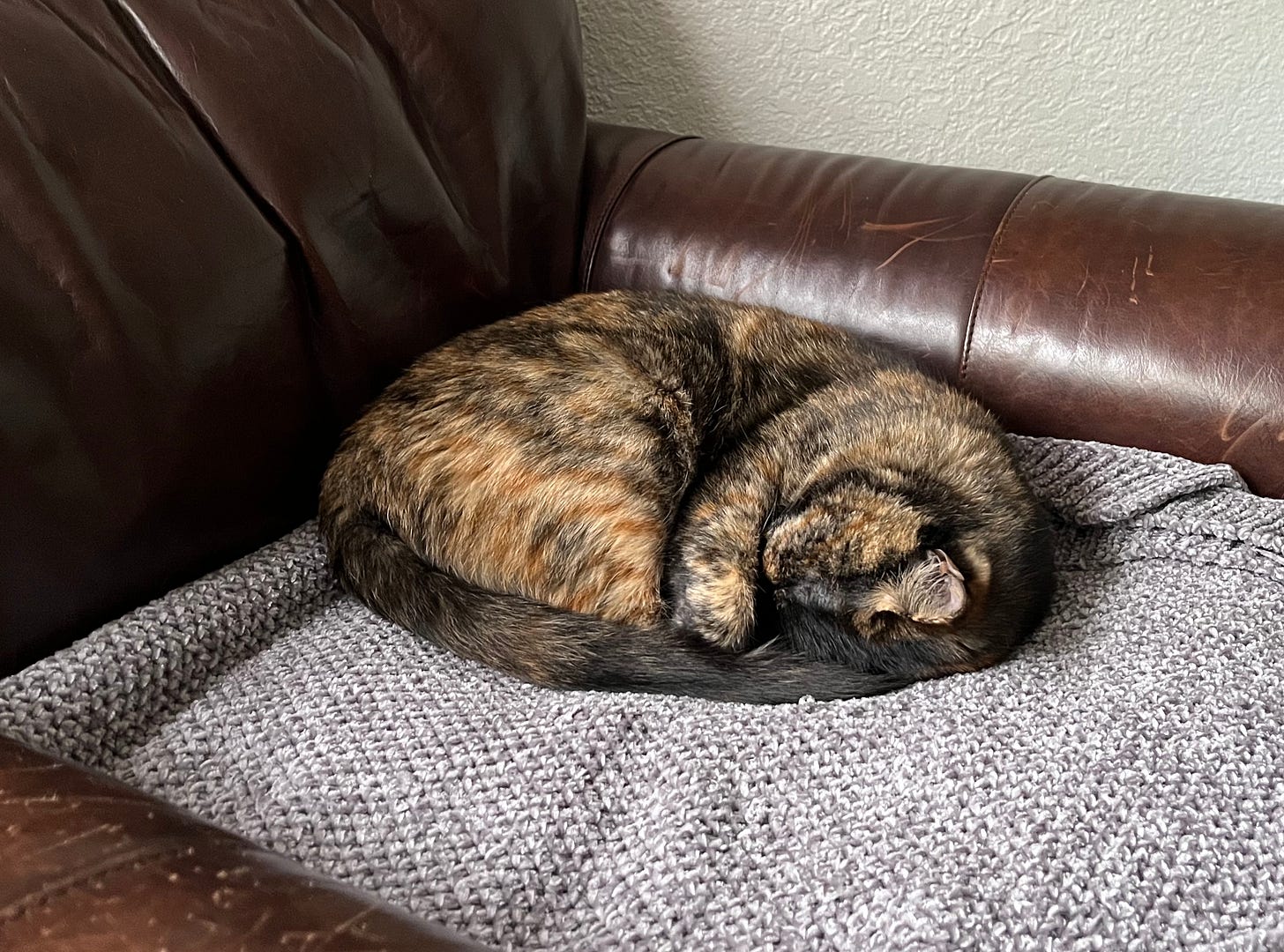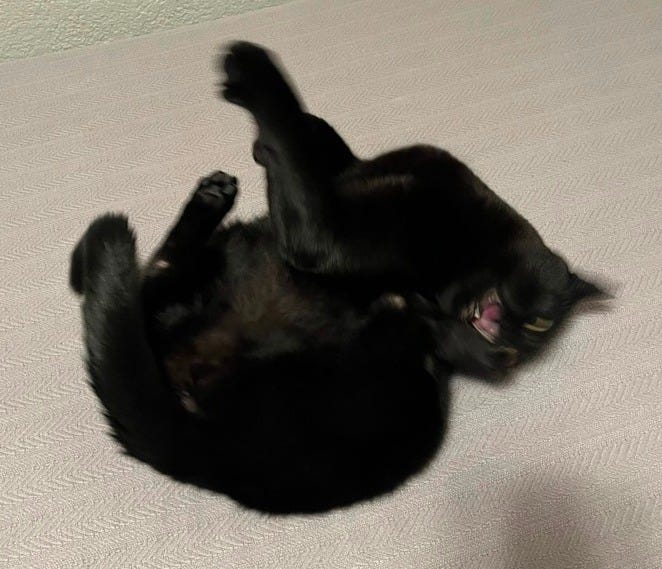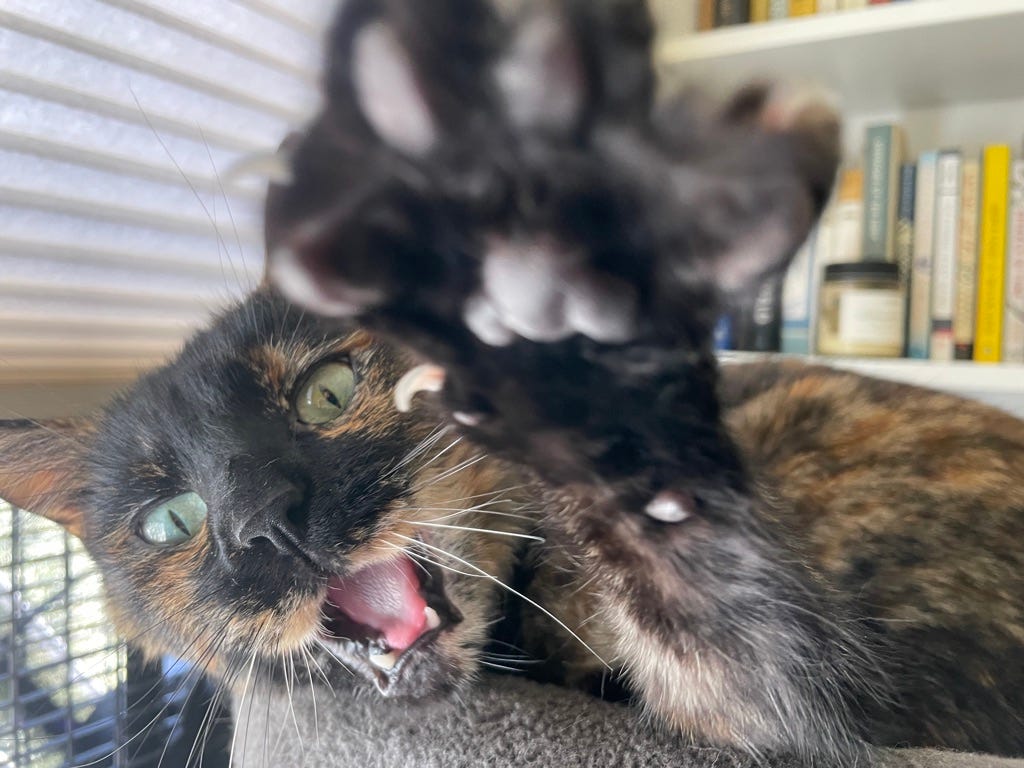My debut novel, Homebound, will be out almost exactly a year from today (so far and yet also so soon?!) which seems like a good reason to tell you my True Feelings about something:
I want to scream a little bit every time I hear the question “Are you a plotter or a pantser?”
Is this a question that comes up in my regular, day-to-day life? No, absolutely not.
Have I spent at least one commute thinking about my TED Talk “Why ‘Plotter or Pantser’ is a terrible question”? Yes, yes, I have. And today, you’re getting that TED Talk.
If those words have ever made you feel like a Dilophosaurus from the original Jurassic Park (or maybe just like you are doing writing wrong somehow), this newsletter is for you.1

I first heard the terms “plotter” and “pantser” when I was maybe 19 or 20. I wasn’t reading or listening to interviews with any working writers, so those terms formed in my baby-brain as black-and-white ideas:
A plotter was someone who wrote a detailed, meticulous outline (complete with nested Roman numerals), someone who knew everything that happens in their book before they started
A pantser was someone who knew nothing about their story before they sat down to write; they followed EL Doctorow’s headlights in the foggy dark
And ne’er the twain shall meet!
An understanding — a belief — solidified in my mind: There were two “right” ways to write books: plotting and pantsing. And therefore, if my way of writing a story didn’t look like either of those, I was probably doing it wrong.
Which was fine for baby Portia, because I was far more interested in writing angsty poetry!
I came to fiction only a few years ago, and discovered — surprise surprise — that I was neither a pantser nor a plotter.
When I tried to plot, my mind went blank. How could I make these decisions ahead of time? It all felt arbitrary and forced.
When I tried to pants, I ended up wandering away from the keyboard. There were too many choices, too much blank space.
I needed to know something about the story before I started writing, but I also couldn’t know much about the story until I actually started writing. And I kept bumping up against the deep belief I’d internalized, that somehow this wavering between knowing-and-not-knowing made my way of writing wrong.
Last year, my Day Job brought in a teacher to lead us in a “Verbal Judo”2 workshop. The instructor told us that — according to Verbal Judo — there are three kinds of people:
Nice people comply when you give them rules
Sneaky people say they will comply, but then don’t
Difficult people might comply, but they’ll probably ask a lot of questions first
The instant I read those descriptions, I knew: I am a difficult person.3 No matter the project, I am always asking too many questions, planting my heels until I understand the why. I want to turn something over and see how it works, what it’s connected to, where it came from.
And that is also how I write:
I dig in; I ask questions; I need to understand the why, and I get at that why by making things and then immediately pulling them apart.
Perhaps what has always felt false or restrictive about plotter and pantser is that they seem so very linear. But what if my way into a novel took a different shape altogether?
What if my way into writing meant turning things around and around, more spiral, or perhaps ouroboros? Less beginning-middle-end?

This is what I mean by a less linear process:
I write words, thousands of words. I write them a few hundred at a time, on my very ridiculous Alphasmart Neo. On a good day, I get 500 words before I go to the day job.
Every few days, I stall out, so I think things through in my journal for another few days or a week. I ask myself questions,4 play out possible answers, and then draft a little further into the story.
I make myself notecards of important images and feelings, and then write my way towards and through them.
I mine the pages I’ve written for ideas and questions and threads that I can pick up and carry a little further.
I read model texts and write to myself about how they solve the same kinds of narrative problems I’m having.
I lay out lists of all the scenes I’ve written and color code them and then lose the paper.
I drafted and revised my whole book this way — forwards and backwards and forwards again — sometimes abandoning many (thousands of) words along the way — but I had to travel through them, in order to see where the story was meant to go.
Writing (for me) is not an efficient process, not a checklist of scenes or steps, not a linear this then that then this.
But really, my guess is that most writers do some version of this, that most writers are not neatly plotters or pantsers, that the question beneath that neat dichotomy is really:
How does your particular brain+heart create stories?
Which, of course, is a much more (interesting) complicated question. As much joy and inspiration5 as there is in learning from other writers, no two writers create stories the same way.
Proposal to retire “plotter” and “pantser” and introduce the following alternatives:
Archeologist
Cartographer
Fussy toaster whose button needs to be pressed six and a half times to get the toast [story] right
Beachcomber
NASA mission control
Inventor
Silk worm
Drill Sergeant
Palm reader
Storm chaser
Kindergarten teacher
Tide pool
Tell me in the comments: How does your brain+heart create stories? If we abandon plotter and pantser, what kind of a writer are you?
If, it turns out, you love being either a pantser or plotter, feel free to scroll on lol — no really, I think so often we see and experience (and even deliver) Lessons on Craft as though there’s a singular Craft to learn, when in fact “craft” is ever-shifting and evolving for each of us writers, and is perhaps better described as our own relationship to the work of telling stories, rather than any kind of guaranteed steps to follow. And my personal craft hill I’m dying on right here is that pantser and plotter are not useful terms!
I have mixed, complicated feelings about verbal judo, and its roots in law enforcement — and yet I have found it useful in seeing every interaction with my patrons as an opportunity for connection, even when I’m having a hard conversation.
This is also probably why I dislike prescriptive writing advice (“You should X”) and prefer description writing advice like Lincoln Michel’s Processing interview series, or Rebecca Makkai’s deep dives into craft elements, or George Saunder’s excellent Story Club.
It feels somehow important to say that I write my journal entirely in the first person, so my questions to myself are not written in the second person (“Why are you stuck?”), which I find too confrontational for a journal!
And sometimes paralyzing comparison!








I will tell people I'm a zippy weekend jaunter in a Model A, but actually I'm a bathtub sailor who wants to name each bubble
Omg, that cat somersaulting down the stairs! It really is a pretty decent depiction of the nonlinear process of getting somewhere with a writing project. My favourite bit is when the cat stops and has a little bath.